This article was written by frequent guest contributor, Rhys Pogson Hughes Emanuel. If you’d like to feature your own Warlord Games game reports, conversions, miniatures or armies get in touch via articles@warlordgames.com!
Rhys: I recently had the privilege to run, rather than participate in, a Black Powder Epic Battles: American Civil War game with two friends from work. This presented me with an opportunity to go slightly beyond the typical gaming experience, and enhance it for both me and my friends.
Firstly, both players were being newly exposed to Epic Battles, and more specifically the American Civil War range, having much more of a foothold in Games Workshop’s systems, although they have dabbled in WWII and modern-era wargames. The immediate opportunity was to have them enjoy the experience, but also to have them see that historical wargaming can be as rewarding, if not even more so, than some of the more abstract games they were used to. It would also serve to demonstrate that entering a new period of wargaming shouldn’t be as daunting as they had perceived.
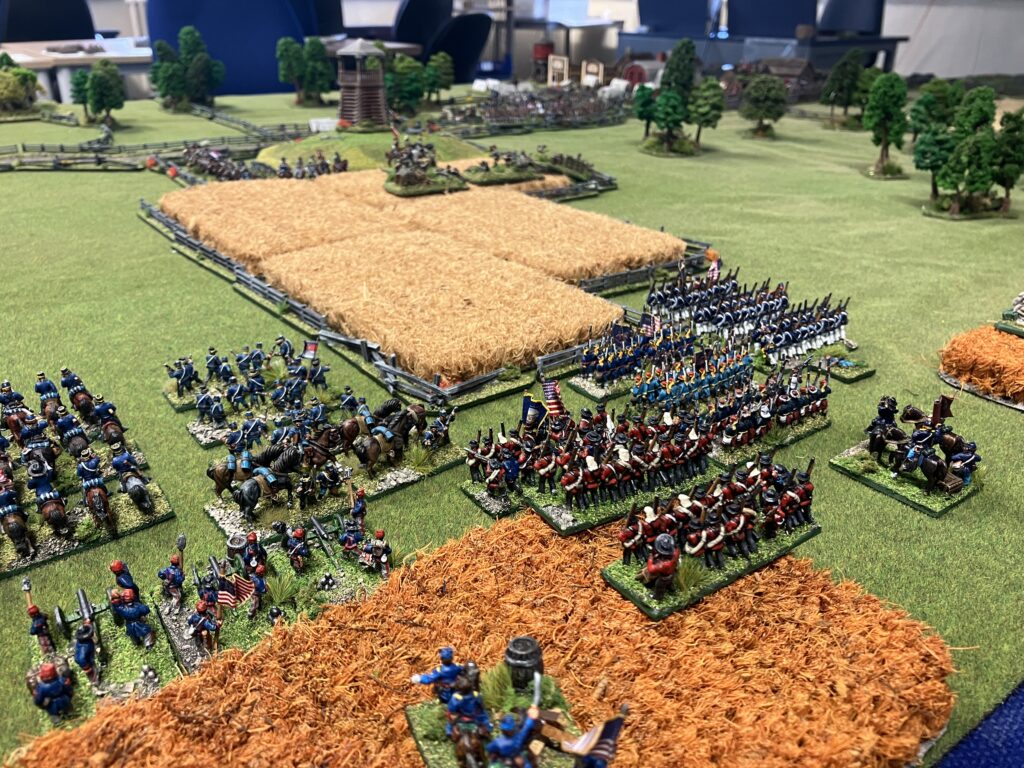
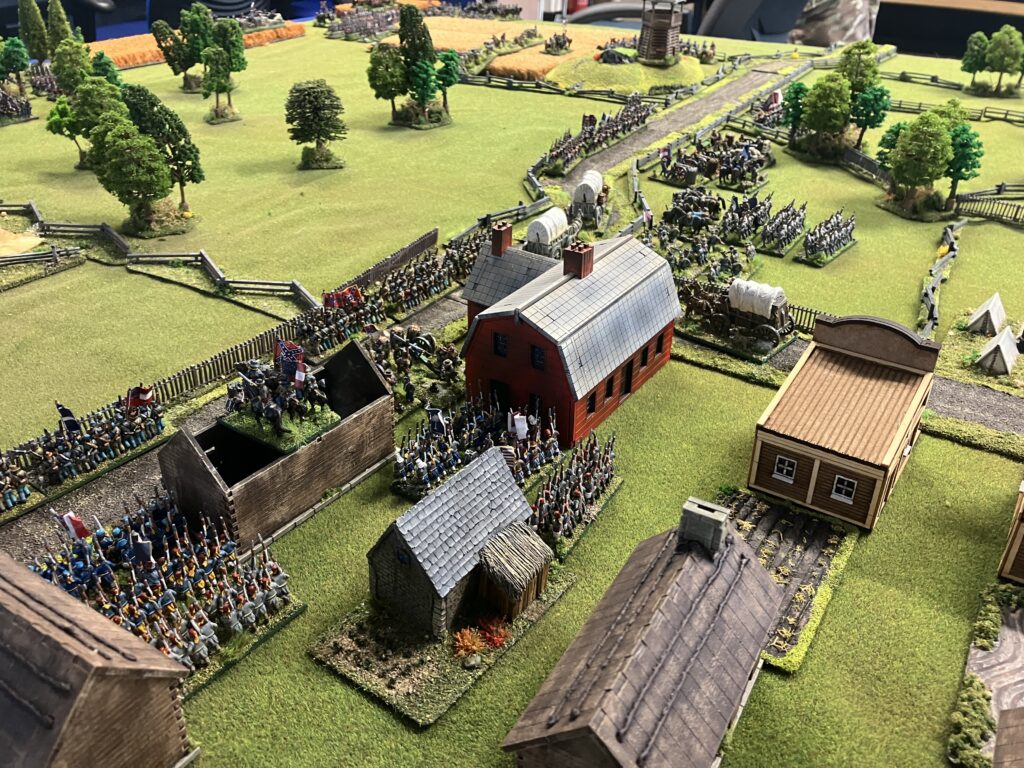
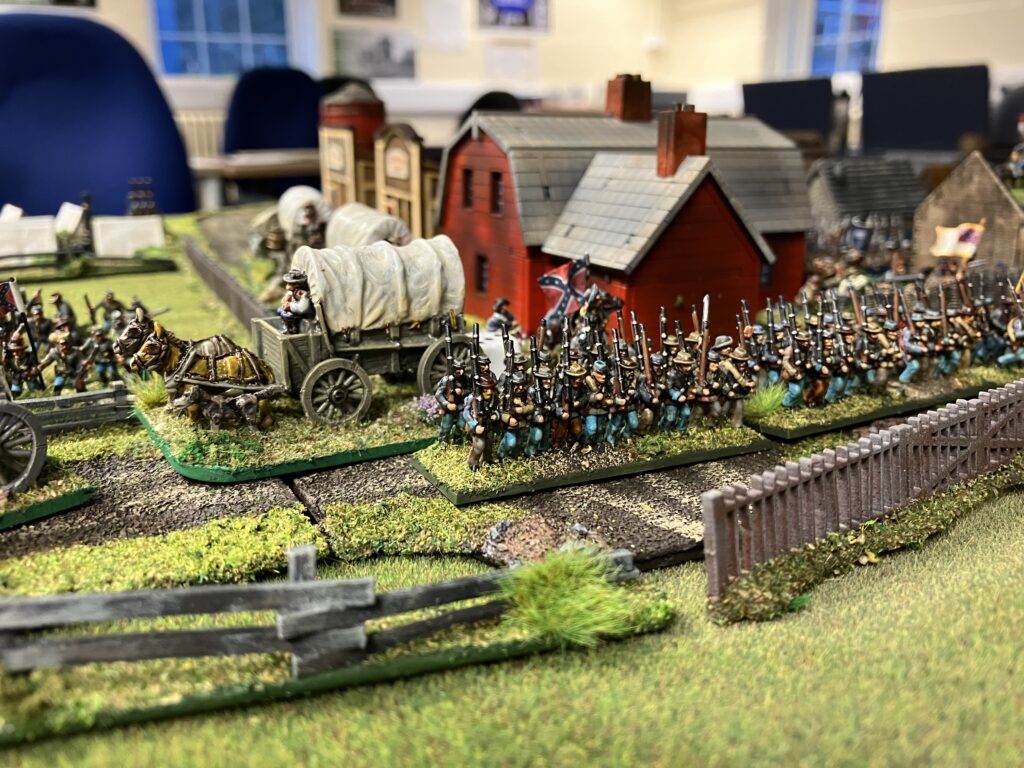
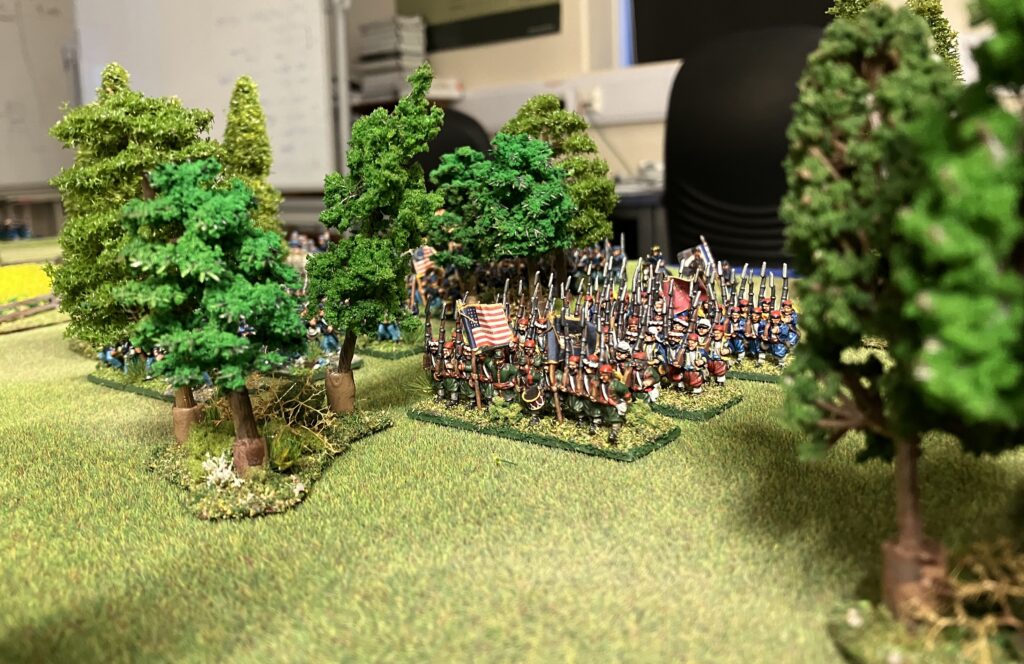
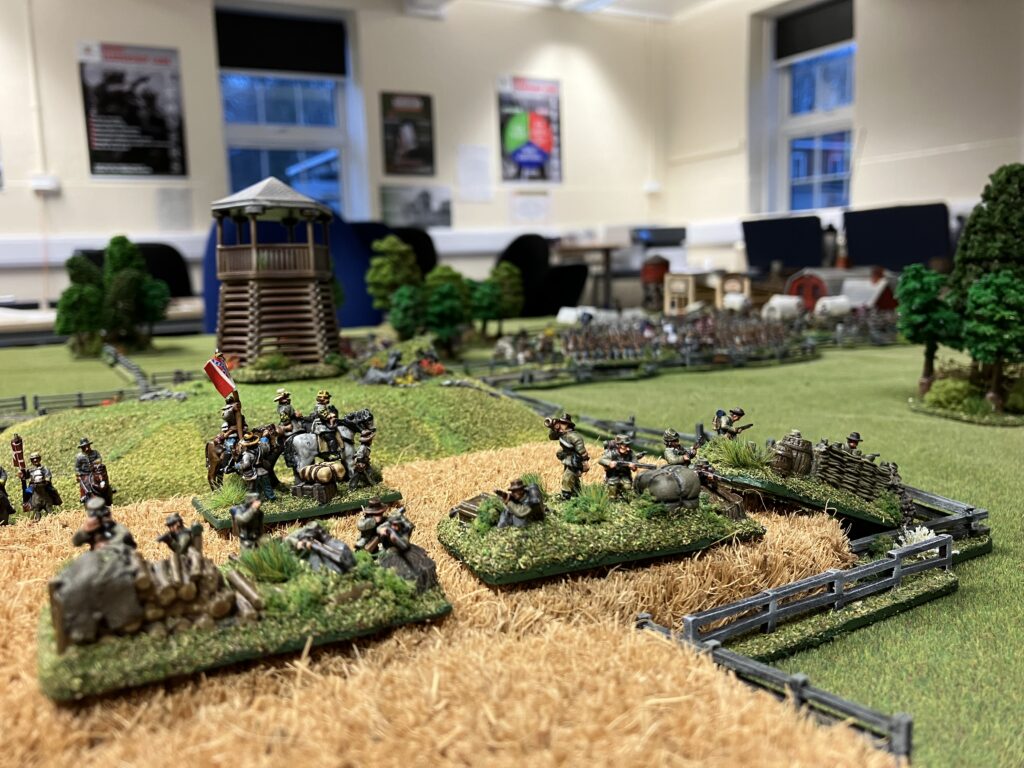
The more personal opportunity was that it allowed me to experiment with scenarios and elements of game design, working with some core principles that could make games more challenging, realistic, and ultimately fun. I especially wanted to see if I could start developing some basic bolt-on mechanics that could transform a simple scenario into something more immersive and a little more involved.
To achieve all these objectives, I invested a little time and imagination beforehand. I first tasked my players with a little light reading on the subject – the Glory Hallelujah! supplement for Black Powder, along with some of my own notes on the ‘typical battle’ of the American Civil War period. Second, I got hold of a very simple scenario, from the wealth available out in the wargaming community. This was a division-on-division encounter, with one side holding a town, with the other attempting to oust them – the kind of scenario you’d routinely find in any number of hobby publications, for any number of wargames! I then overlaid my own military experience with my own historical reading, lending it nuance. Realistically two sides entering into such a battle would have had differing objectives or orders to follow – such differences are the cause of battles swaying off in unexpected directions, making command and control so difficult. This is the challenge I wanted to give my friends, so often missing in standalone tabletop battles that aren’t part of a larger campaign system. My challenge was to try and address that here. Though asymmetric objectives are perfectly applicable in many a wargame, historical wargames are especially suited via inspiration from historical records.
Using light inspiration from real-life American Civil War encounters, I added a few wriggles – the force holding the town had been given orders to retreat off a side table edge if attacked, with their supplies in tow. The attacking force would need to occupy the town, without causing any damage to it, and also secure a prominent hill (conveniently situated on the exit path on the far side). That provided two distinct objectives, one geographically focussed, and the other ‘mission-based’. The difference was further exacerbated by my scoring system, which would serve to influence the decision-making process and identify the priorities for each player. the attackers would score ten points for each destroyed enemy unit, the defenders only two. The defenders would score ten points for holding the hill, whilst the attackers would score forty. Some objectives could only be scored by one of the forces. In theory, both sides could achieve mission success without even coming into direct contact – though thankfully that didn’t happen in the actual game.
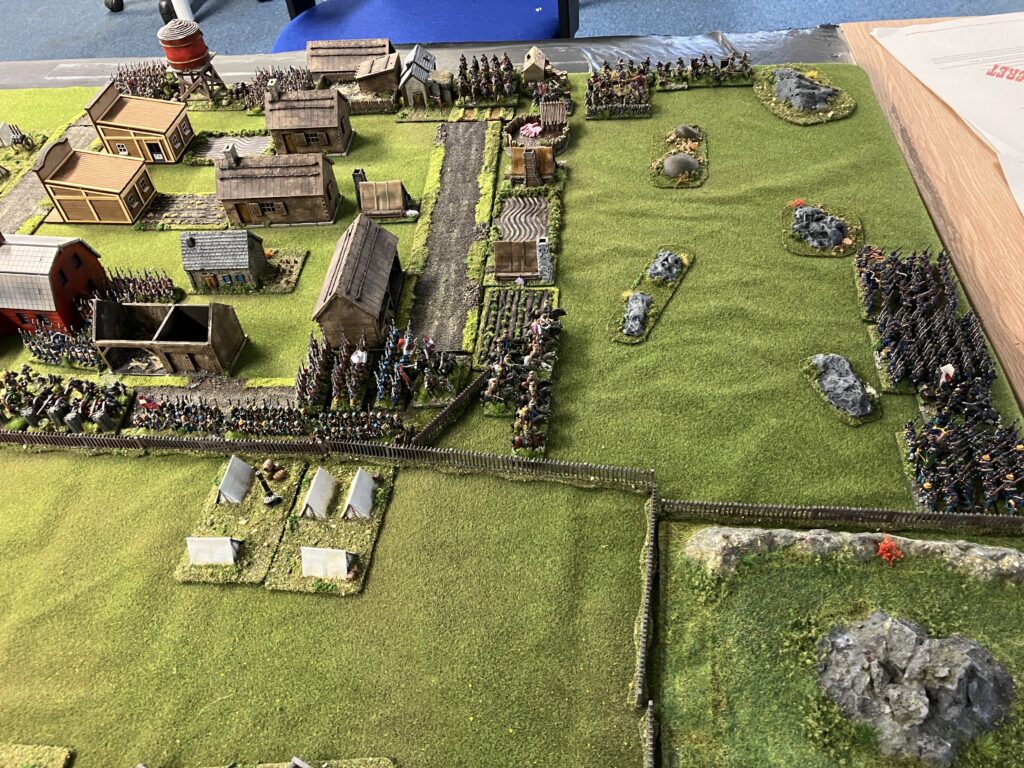
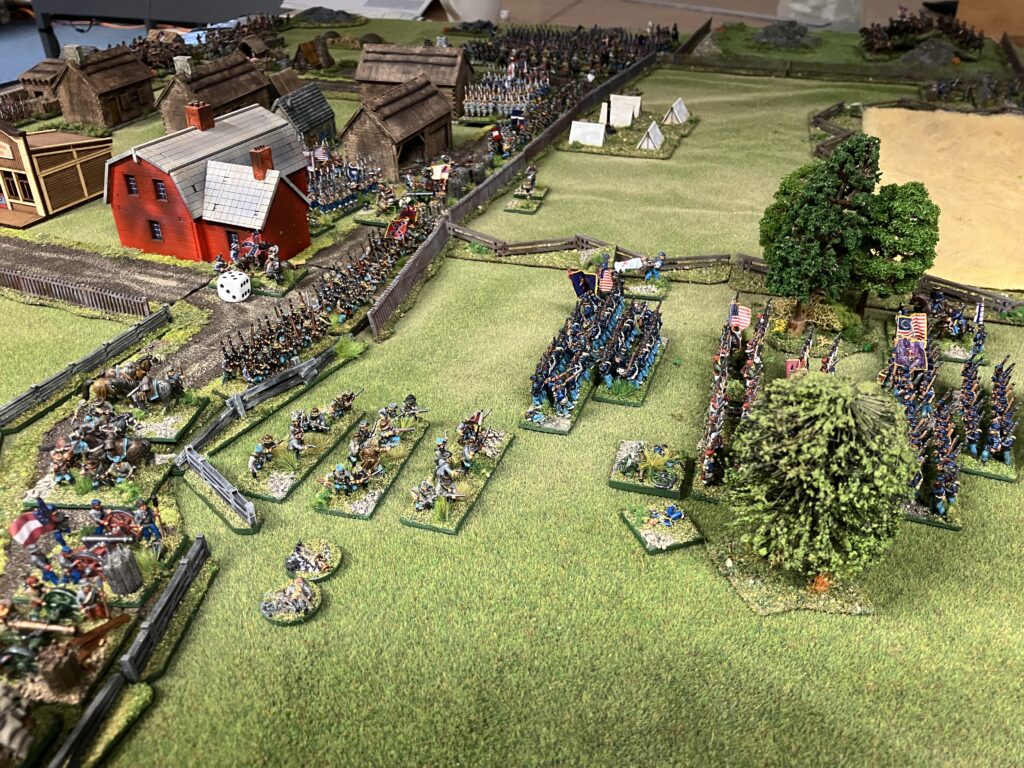

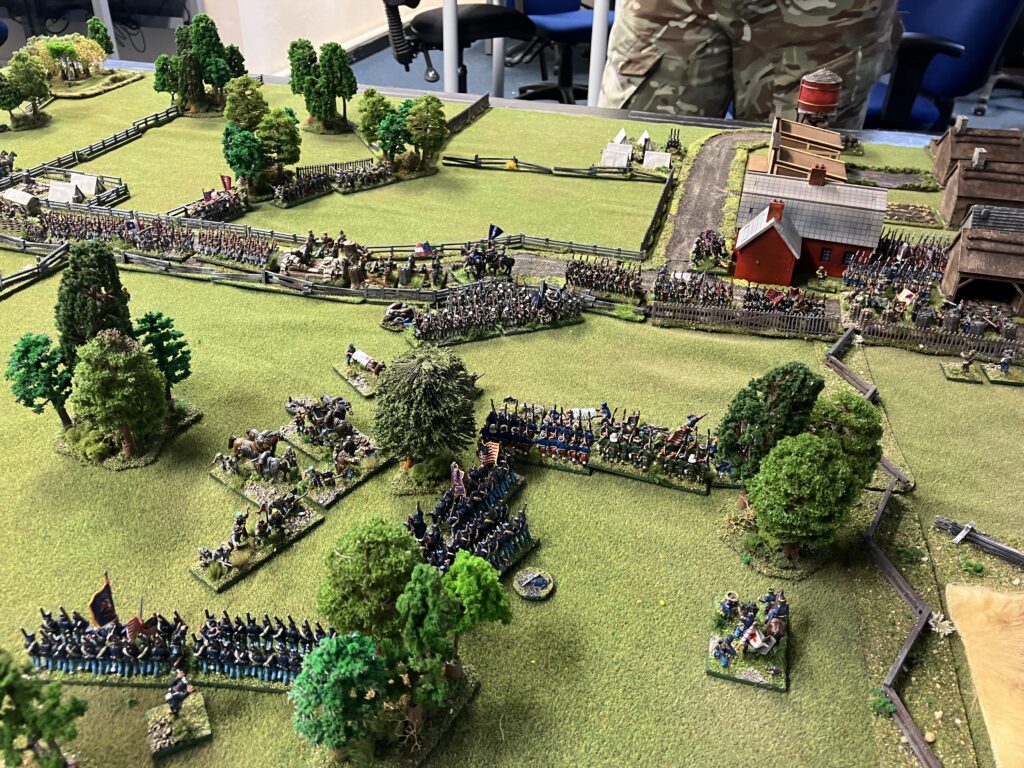
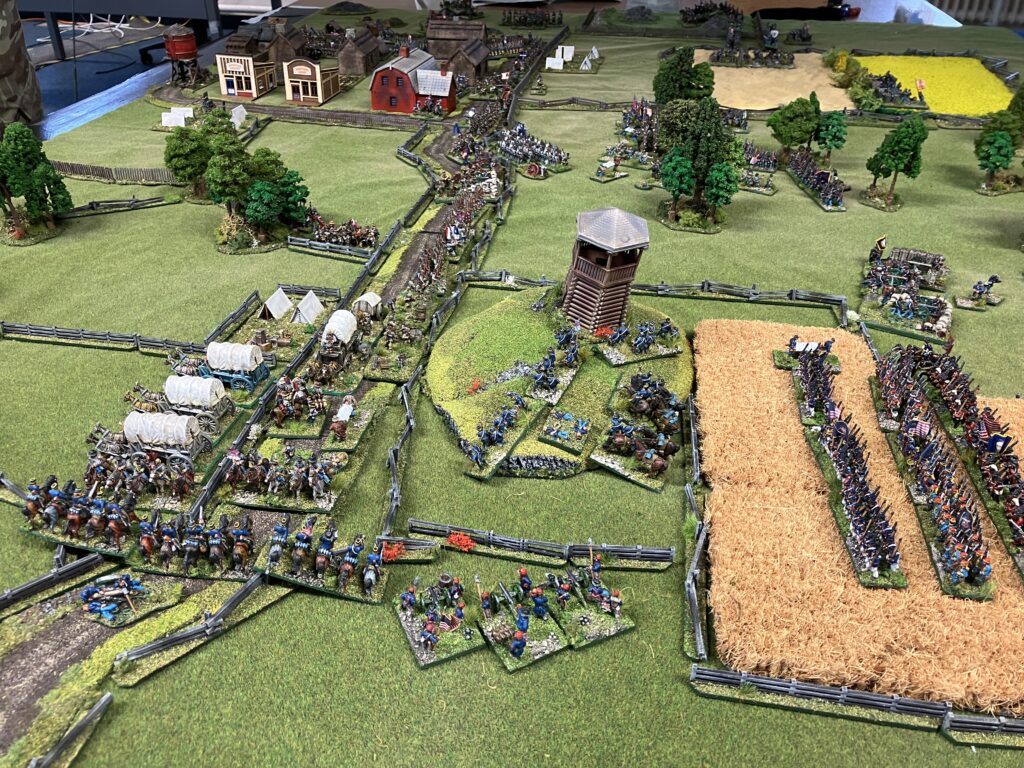
To cement this asymmetric feel, and to make sure neither player knew the other’s primary objectives I gave each player their orders separately and secretly. Neither had any idea what the other had been told to do, what forces they had deployed, or even any special rules or events applied to each side. This could only be done with a third party or game umpire to organise things, but you could easily play the same objectives with full awareness of your opponents’ should you wish. The final stage of set-up was to dig out some old ACW orders, tweak them to fit the game, and deliver them by post to the players’ in-trays, just as if they had come down the chain of command.
The game itself went well, although not quite everything went to plan. Ultimately I achieved my objectives – I had two friends who’d had a good time, and were interested in playing again or even having a go with the other Epic Battles periods. I also got to test some of the concepts I’ve outlined, and I’m one step closer to some working principles that I will be able to apply more routinely in the future.
Interestingly, one player (the attacker) tried to follow the directions given as closely as possible, largely ignoring low-scoring opportunities and piling most resources towards the core mission. The defending player meanwhile, decided to be more interpretive of their directives, fighting a defensive battle from a position of strength rather than trying to break out and retreat early, seeking any and all opportunities to accrue victory points.
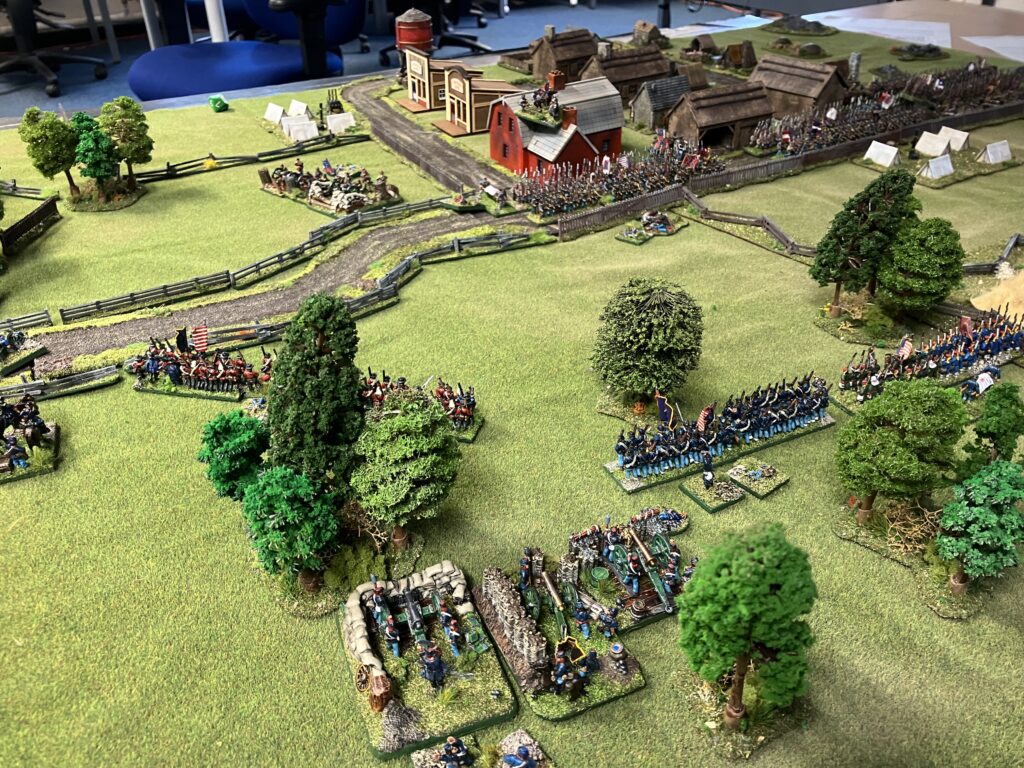


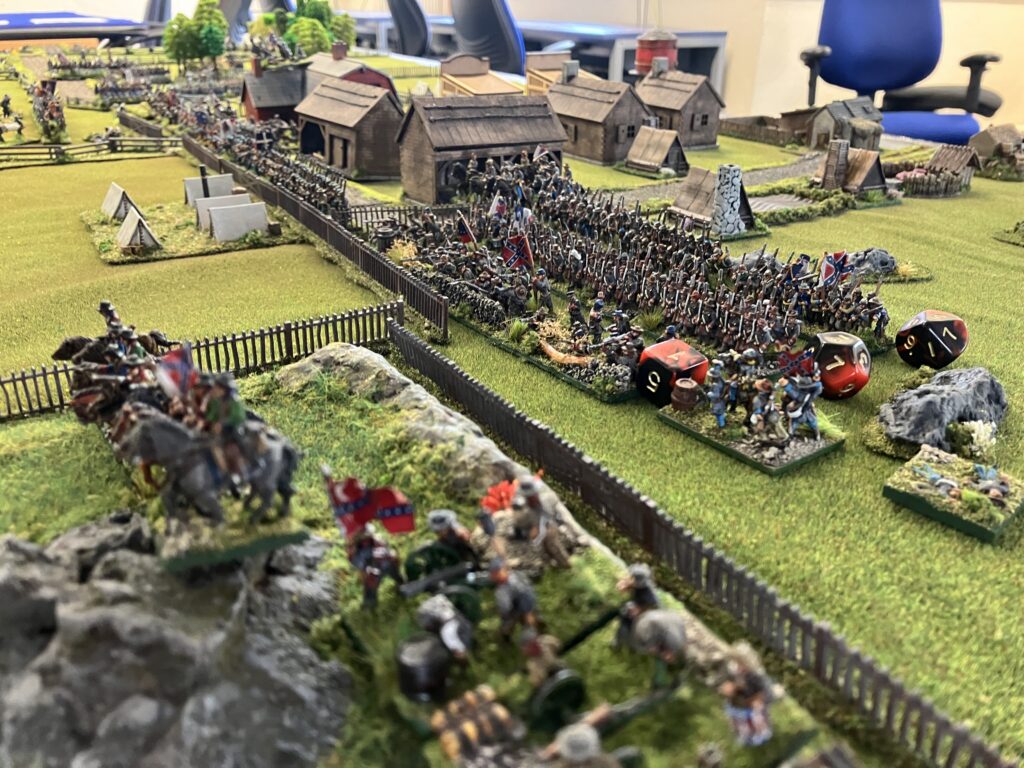
The fight for the hill went very much in the attacker’s favour, and quite quickly. This solidified the defender’s course of action to sit tight. The attacker, although always seeming to have the freedom of movement and the initiative, just couldn’t break into the town. And the resultant brigade lines forming and reforming pouring shot into each other was pleasingly ACW reflective. The defender took some opportunities to slip out some supply wagons, which the attacker almost completely ignored in favour of flanking attacks on the main line. In the end, the defender won on points (mostly from the supply wagons), but almost completely failed to achieve his primary mission. Personal glory for a tactical victory, but their higher command would probably sack them for the impact of the overall strategic failure! This brought out some great conversation around the game.
It was good to get my American Civil War Epic Battles figures out for players other than myself, as well as all the terrain I have been building up. It was also fun to use the game as an opportunity to delve, if only an inch or two deeper, into the historical realities of the period, learn something new; and of course experiment with game design, abstraction and replication.
Article by Rhys Pogson Hughes Emanuel
Inspired? Get started with the Gettysburg Battle-Set
This is the ultimate way to get started with Epic Battles, with two massive armies in colour-coded plastic (including brand new plastic zouaves, cavalry, dismounted cavalry & skirmishers) the aforementioned MDF scenery pieces and just about everything you need to get playing the American Civil War on the epic scale it deserves. The Gettysburg Battle-Set contains:
- Union army (blue plastic) – 8 infantry regiments, 1 zouave regiment, 1 cavalry regiment, 1 dismounted cavalry regiment, 1 skirmishers regiment, 8 cannon & 8 mounted commanders
- Confederate army (grey plastic) – 8 infantry regiments, 1 zouave regiment, 1 cavalry regiment, 1 dismounted cavalry regiment, 1 skirmishers regiment, 8 cannon & 8 mounted commanders
- Green plastic bases for all figures
- A5 Black Powder rulebook
- 36-page American Civil War background, scenario and supplemental rule booklet
- Flag sheets for both Union and Confederate forces
- Laser-cut MDF farm building
- Laser-cut MDF Snake fences
- Six D6 dice
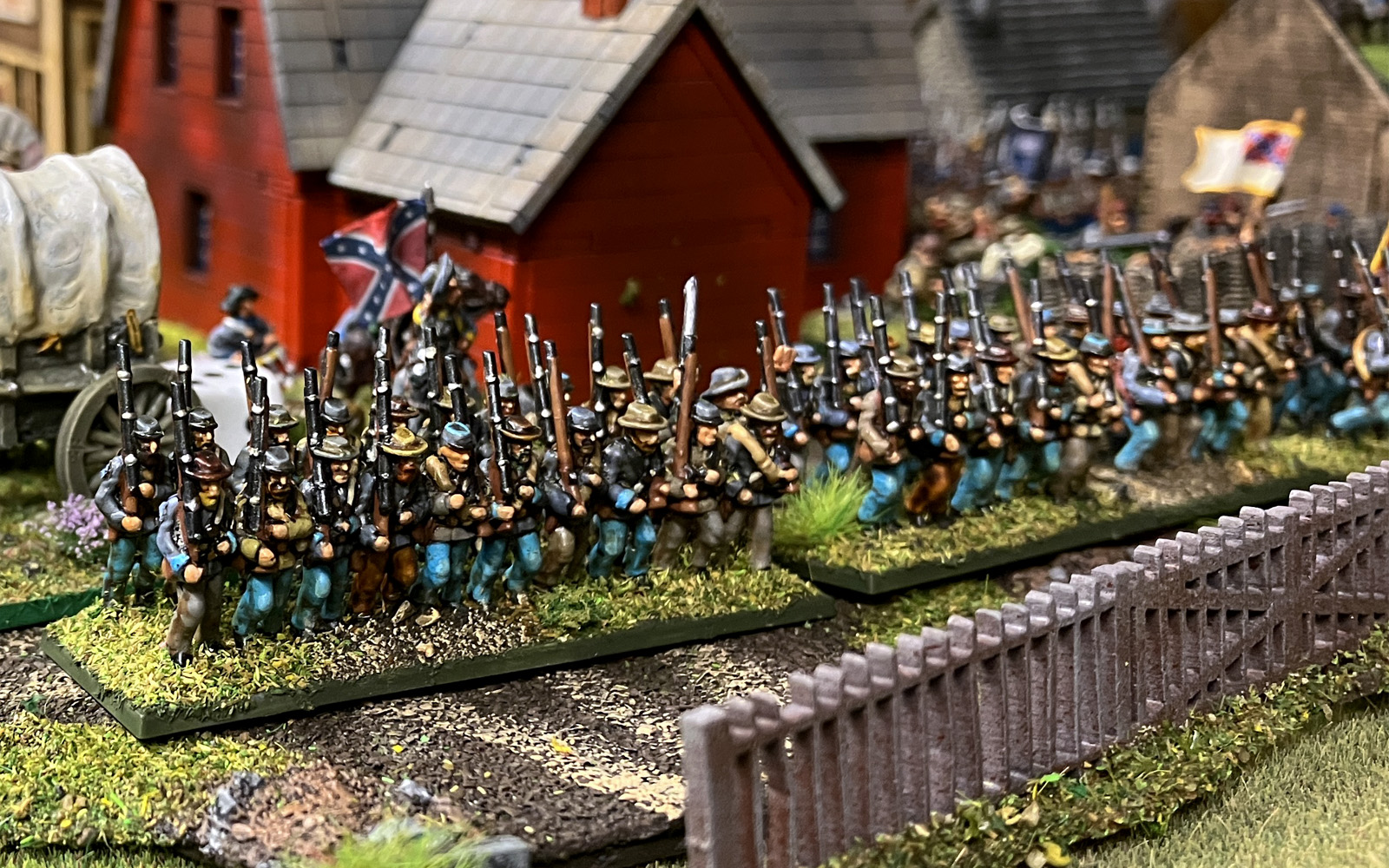

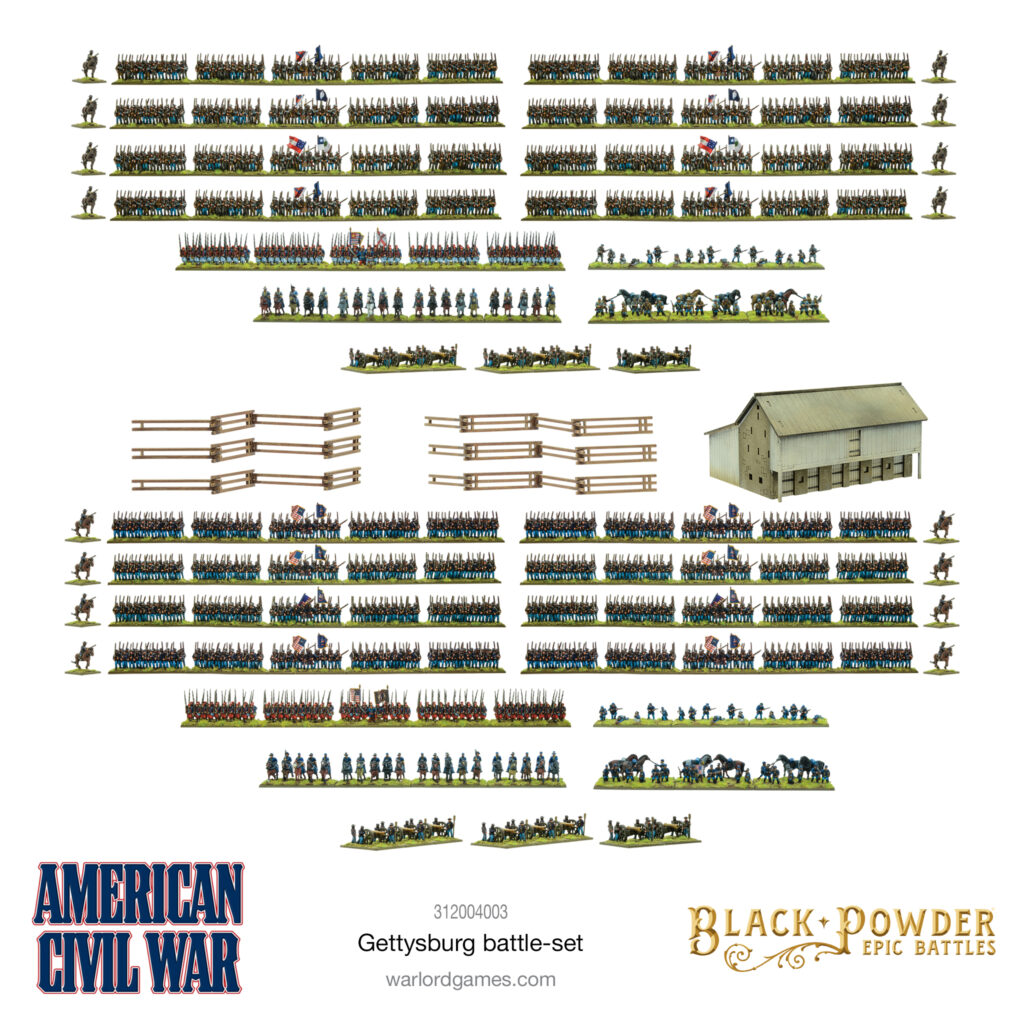
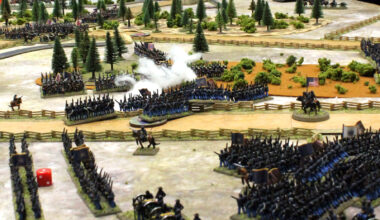
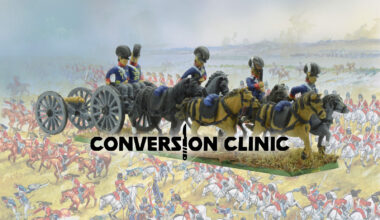
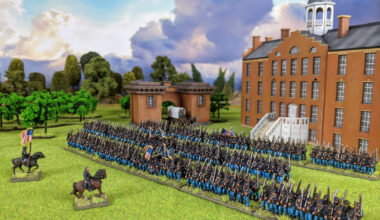
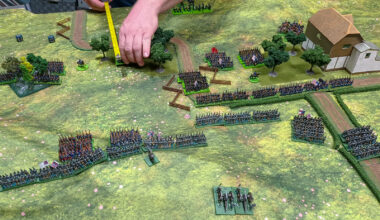
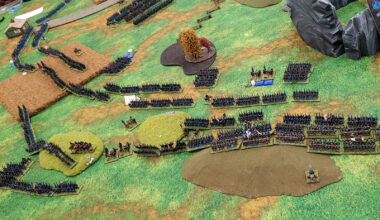
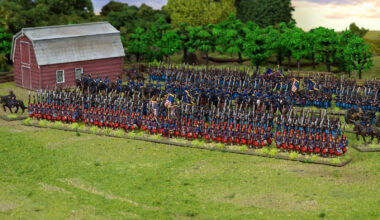
2 comments
Nice! I want to do something similar for a small group of friends, and I like the approach. I look forward to more articles like this.
I am very pleased this hit the mark for you. I will certainly write up anymore interesting Epic battles I try out in the future.
Comments are closed.